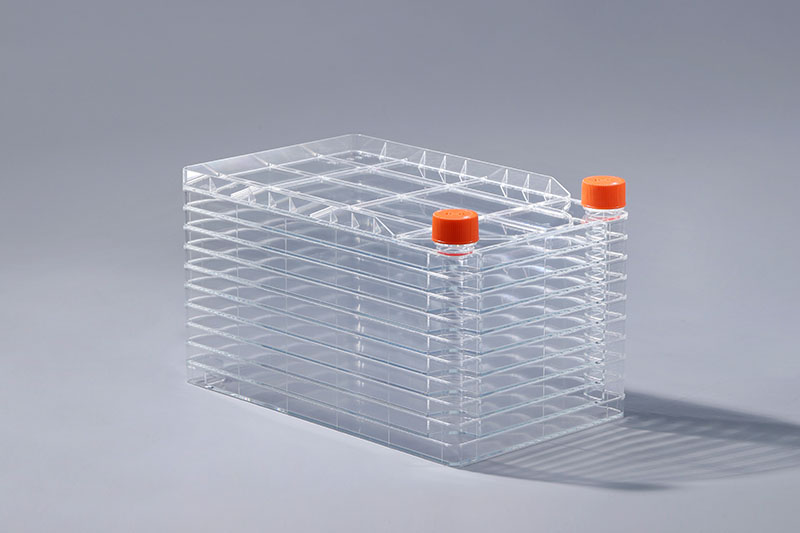A cell factory is a multi-layered cell culture consumable that is generally used for large-scale culture of adherent cells. The quality of consumables directly affects the growth state of cells, so how to control their quality?
1. Raw materials: The raw materials of the cell factory are generally polystyrene, and the raw materials must meet the USP Class VI standard. USPVI level medical equipment test is a relatively strict test for the application of plastic materials in the medical field and pipeline products in biopharmaceuticals. It is a non-clinical laboratory study that meets various experimental specifications.
2. Production environment: cells are particularly sensitive to the growth environment, so consumables are required to contain no substances harmful to cells such as endotoxin, which puts forward higher requirements for their production environment. Consumables must be produced in a dedicated 10,000-class clean room, and undergo rigorous verification (planktonic bacteria, sedimentation bacteria, and suspended particle detection), and carry out quality management in accordance with GMP workshops to ensure stable product quality.
3. Production process: This refers to the production process of the product, which is directly related to the flatness and sealing of the finished product. The cell factory is produced by the injection molding process, and various parameters in the production must be strictly controlled.
4. Quality inspection: After the production of the product is completed, it must undergo various quality inspections, such as surface hydrophilicity testing, sealing testing, biosafety testing, physical and chemical safety testing, product validity period verification, packaging verification, etc., to determine whether it is qualified.
The above are four aspects that high-quality cell factories need to pay attention to. In addition, if it is a consumable with a multi-layer structure, it also involves whether the fit between the layers is intact, which is directly related to the tightness of the product.
The FAI climbed 5.9 percent year-on-year in the first 11 months of 2018, quickening from the 5.7-percent growth in Jan-Oct, the National Bureau of Statistics (NBS) said Friday in an online statement.
The key indicator of investment, dubbed a major growth driver, hit the bottom in August and has since started to rebound steadily.
In the face of emerging economic challenges home and abroad, China has stepped up efforts to stabilize investment, in particular rolling out measures to motivate private investors and channel funds into infrastructure.
Friday's data showed private investment, accounting for more than 60 percent of the total FAI, expanded by a brisk 8.7 percent.
NBS spokesperson Mao Shengyong said funds into weak economic links registered rapid increases as investment in environmental protection and agriculture jumped 42 percent and 12.5 percent respectively, much faster than the average.
In breakdown, investment in high-tech and equipment manufacturing remained vigorous with 16.1-percent and 11.6-percent increases respectively in the first 11 months. Infrastructure investment gained 3.7 percent, staying flat. Investment in property development rose 9.7 percent, also unchanged.
 English
English



















































